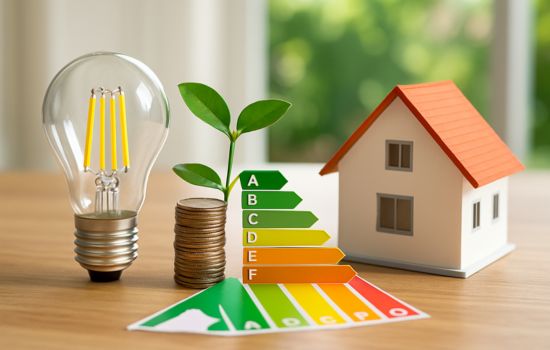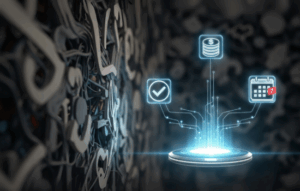Advertisements
Have you ever wondered how to reduce your electricity consumption without sacrificing comfort? Saving energy at home is not only good for your wallet, but also for the planet. In this article, we'll show you. How to save up to 20% of energy at home With simple and effective tips. You don't need to be an expert to get started!
Reducing energy consumption doesn't have to be complicated or require large investments. With small changes to your daily routine and a few adjustments to how you use electrical appliances, you can make a significant impact. From changing a light bulb to making better use of natural light, every action counts. In the following sections, we'll guide you step by step so you can start consuming less and living more sustainably today, without sacrificing the comfort your home provides.
Advertisements
Why is it important to save energy at home?
Before getting into the practical tips, it is important to understand Why we should save energy at homeHere are some reasons:
- Economic savingsBy reducing electricity consumption, the electricity bill drops considerably.
- Environmental impactLess consumption means less emissions of polluting gases.
- Greater efficiency: Using energy wisely improves the performance of your appliances.
- Lifespan of household appliances: Rational use of appliances prolongs their durability.
Advertisements
See also
- How to save up to 20% of energy at home
- Teas to Improve Performance
- Improve Your Battery with Apps
- App for Valuing Coins
- A natural boost to revitalize your body and your relationship
- Improve Your Battery with Apps
1. Change the light bulbs to LEDs
One of the simplest and most effective steps to save energy at home is replace incandescent bulbs with LED bulbsAlthough LED bulbs may seem more expensive at first, they use up to 80% less energy and last much longer.
Advice:
Try changing light bulbs first in the areas you use most: kitchen, living room, and bathroom. This way, you'll see the savings faster.
2. Turn off appliances you don't use
Many electronic devices consume energy even when they're off, simply by being plugged in. This is known as "vampire consumption." To avoid it:
- Unplug chargers when not charging.
- Use power strips with switches to turn off multiple devices at once.
- Set up your devices in energy saving mode if they have that option.
Common mistake:
Thinking that turned-off appliances don't consume any energy. They do! Even if it's just a little bit, added up over the month it makes a difference.
3. Take advantage of natural light
The sun is a source of light free and renewableBy organizing your daytime activities to take advantage of natural light, you can reduce your use of artificial lighting.
- Open curtains and windows during the day.
- Paint the walls with light colors that reflect light better.
- Place mirrors strategically to multiply natural light.
Additional tip:
If you work from home, place your desk near a window. Your eyesight and your wallet will thank you.
4. Use efficient appliances
When purchasing a new appliance, Choose those that have an energy efficiency label class A or higherAlthough the price may be a little higher, the long-term savings in electricity more than make up for it.
Example:
An A+++ refrigerator can consume up to 60% less energy than an older one. It's a smart investment!
5. Cook intelligently
The kitchen is one of the areas that consumes the most energy. Here are some tips for cooking more efficiently:
- Use lids when cooking to retain heat.
- Take advantage of the residual heat from the oven or stove.
- Cook in larger quantities and save portions for other days.
- Avoid opening the oven door frequently.
- Defrost food naturally instead of using a microwave.
6. Regulates the temperature of the air conditioning and heating
Air conditioning systems are one of the main energy consumers. To save:
- Keep the air conditioning at 24-26ºC in summer.
- In winter, heating between 18-21ºC is sufficient.
- Insulate doors and windows well to prevent air leaks.
- Wear clothing appropriate for the season and reduce the use of air conditioning.
Typical error:
Set the air conditioning to 17°C to cool faster. This doesn't work and only uses more energy.
7. Wash clothes in cold water
Many washing machines have cycles that heat the water unnecessarily. Most of the time, It is not necessary to wash with hot water.
- Use cold water for most garments.
- Wash full loads to avoid wasting energy and water.
- Air dry clothes whenever possible.
8. Check the thermal insulation of your home
A good part of the energy consumption is lost due to poor thermal insulationWhat can be done?
- Seals gaps and holes in doors and windows.
- Use weather stripping or insulating tape.
- Put up thick curtains in winter and light ones in summer.
- If you can, invest in double-glazed windows.
9. Install solar panels (if possible)
If you have the means and the budget, installing solar panels in your home can reduce your dependence on the traditional power grid and, in many cases, save you up to 50% or more on your electricity bill.
In addition, some governments offer incentives or subsidies to encourage the use of renewable energy.
10. Educate the whole family
It's no use for just one person in the house to try to save energy if the others don't cooperate. That's why it's essential:
- Teach children to turn off the light when leaving a room.
- Create habits, such as unplugging chargers.
- Place reminders in visible places.
- Create energy-saving games or challenges to motivate everyone.

Conclusion: Small changes, big results
As you can see, Saving up to 20% of energy at home is entirely possible.You don't need to change your entire life, just adjust some daily habits. The benefits aren't limited to financial savings: you'll also help the environment, improve household efficiency, and even become more aware of your consumption habits.
Remember: It's not about doing everything perfectly, but rather to start little by little. Today you change a light bulb, tomorrow you turn off an unused appliance, and in this way, step by step, you'll achieve a more efficient and sustainable home.
Are you already using any of these tips? Start today and tell us your results!




